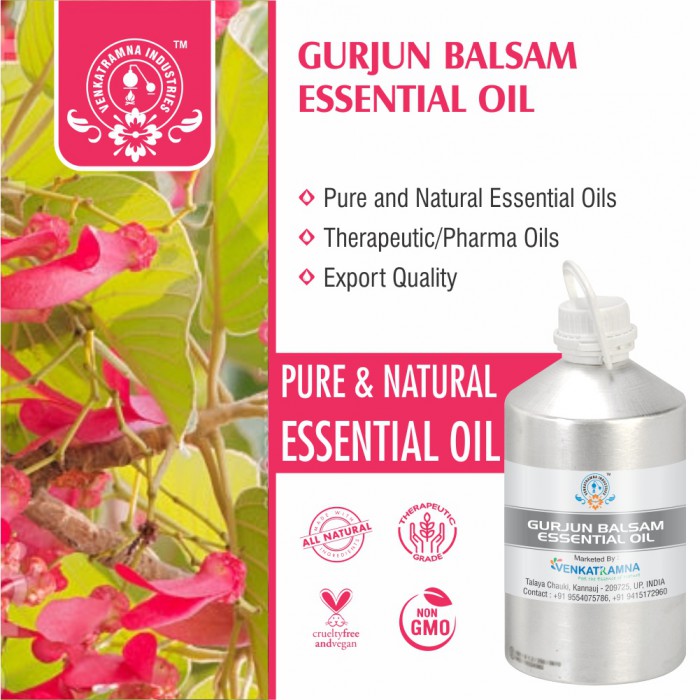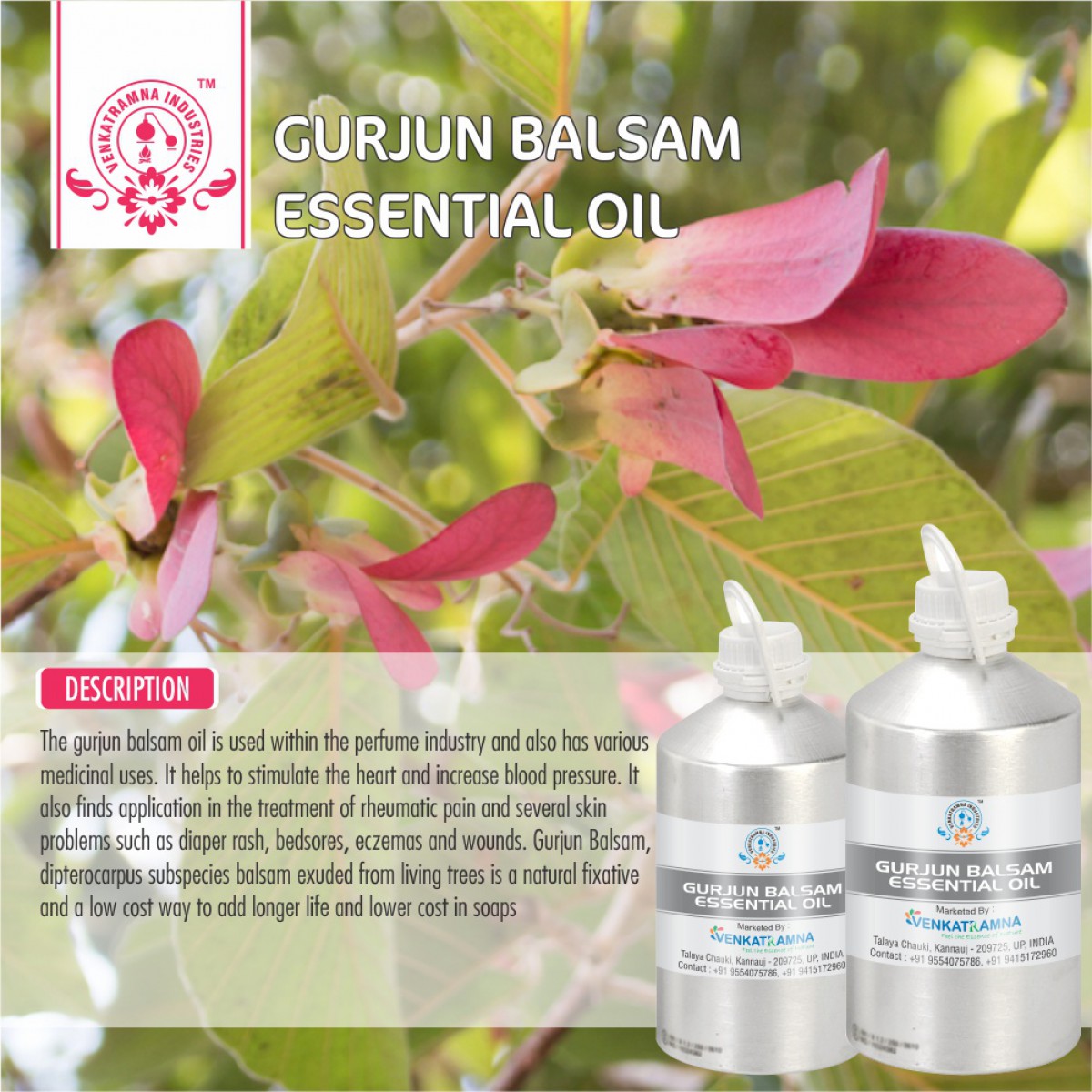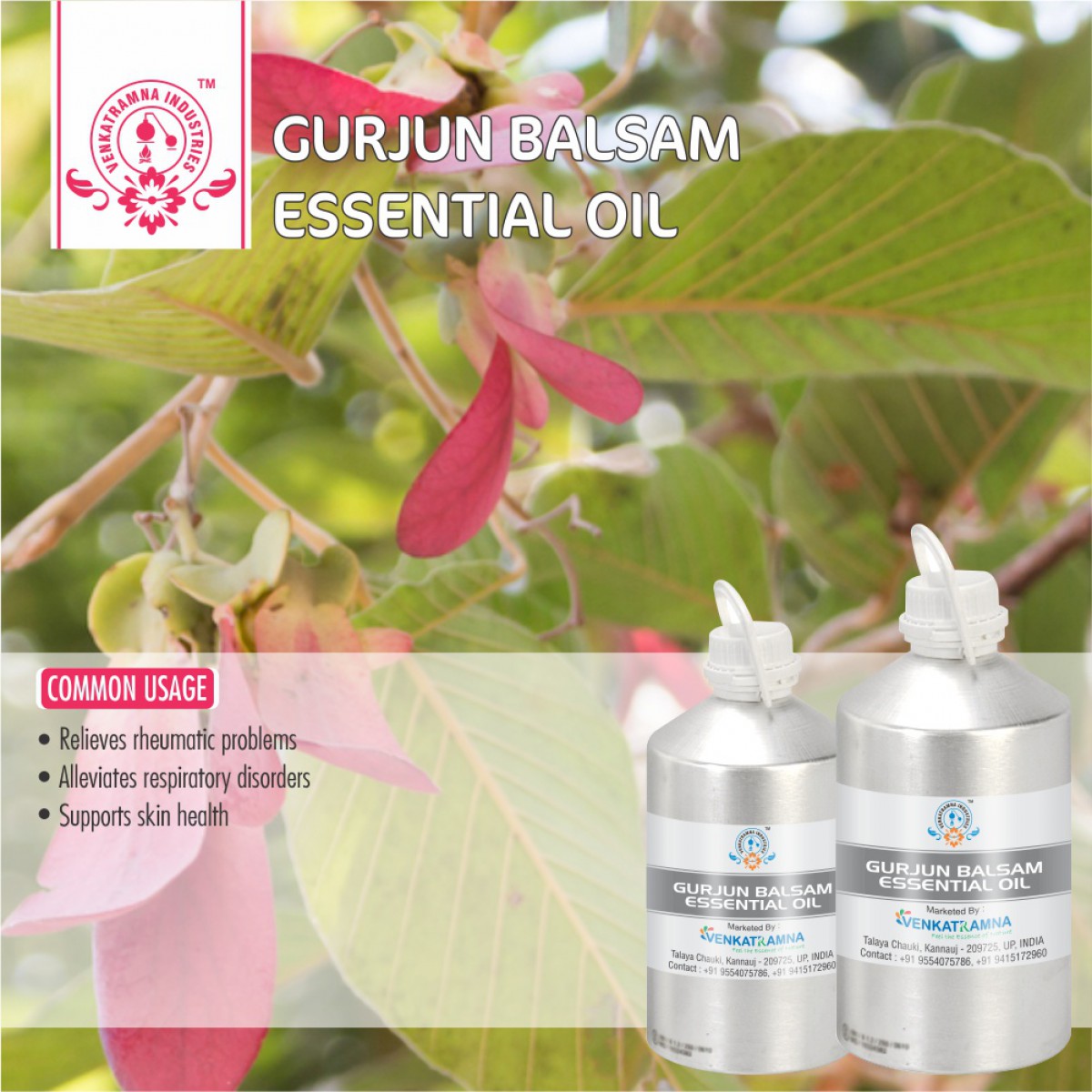Botanical Name: Dipterocarpus Turbinatus Common name: Gurjan Balsam Oil, Gurgina Read More
|
Botanical Name: |
Dipterocarpus
Turbinatus |
|
Common name: |
Gurjan
Balsam Oil, Gurgina |
|
Plant
family: |
Dipterocarpaceae |
|
Genus: |
Dipterocarpus |
|
Appearance/Color: |
Pale yellow to
amber clear oily liquid |
|
Odor: |
Mild woody sweet
notes, hint of conifer aroma |
|
Blends With: |
Ambrette seed,
amyl benzoate, Cedarwood, citrus oils, clary sage, jasmine, rose, vanilla,
ylang ylang |
|
Origin: |
India |
|
Source: |
Resin |
|
Method
of Extraction: |
Steam
Distillation |
Dipterocarpus jourdainii and Dipterocarpus turbinatus, are trees that are India and Asia. The tree exudes a resin that is then collected and steam distilled to produce Gurjum Balsam Essential Oil. Gurjum Balsam Essential Oil primarily contains the sesquiterpene a-gurjunene. It possesses a woody and slightly sweet aroma that blends especially well with essential oils in the wood, spice and citrus families.
DISCLAIMER
The complete range of conditions
or methods of use are beyond our control therefore we do not assume any
responsibility and expressly disclaim any liability for any use of this
product. Information contained herein is believed to be true and accurate however,
all statements or suggestions are made without warranty, expressed or implied,
regarding accuracy of the information, the hazards connected with the use of
the material or the results to be obtained from the use thereof. Compliance
with all applicable federal, state, and local laws and local regulations
remains the responsibility of the user.
The FDA has not evaluated the
statements on this website. No claims are made by Venkatramna Industries as to
the medicinal value of any products from vriaroma.com or by us. The information
presented here is for educating our customers about the traditional uses of
essential oils and is not intended to diagnose, treat, cure, or prevent any
disease. You are responsible for understanding the safe application of these products.
If you have any questions, please call or email us for further information.
As per NAHA guidelines, New Directions Aromatics
(NDA) does not recommend the ingestion of essential oils. It is imperative to
consult a medical practitioner before using Essential Oils for therapeutic
purposes. Pregnant and nursing women and those taking prescription drugs are
especially advised not to use this product without the medical advice of a
physician. The oil should always be stored in an area that is inaccessible to
children, especially those under the age of 7.
Gurjun Balsam is also a
well-known for stimulating the heart and increasing blood pressure. Use in
an inhaler to relieve respiratory disorders like asthma, chronic cough and
bronchitis. Dilute with carrier oil and apply topically to alleviate skin
irritations, particularly eczema as this oil is known to help
with Inflammation.
Emotionally and energetically,
balsam copaiba essential oil heals and supports. This essential oil encourages
emotional healing on all levels, quieting a restless mind. Balsam copaiba
essential oil helps focus attention and usher in a more profound sense of
tranquility.
Gurjun Balsam Oil has
wide applications in pharmaceutical and perfume making arena. The stimulating
properties of this oil enhance blood circulation level and maintain salubrious
condition of heart. This oil is a wonderful remedy of skin infections caused by
injury, eczema, bedsore and rash caused by prolonged wearing of wet diaper.
This scented oil is also used to relieve rheumatic pain.
COMMON USAGE
·
Relieves rheumatic problems
·
Alleviates respiratory disorders
·
Supports skin health
·
Antiseptic
·
Anti-inflammatory
·
Skin Inflammation
·
Bronchial Infections
·
Colitis
·
Anxiety
Ingredients:
|
S.No |
Key Constituents |
Strength (%) |
|
1 |
a-Gurjunene |
90.0 |
|
2 |
()-allo-Aromadendrene |
4.0–6.0 |
|
3 |
b-Caryophyllene |
2.0–4.0 |
Safety
Summary
·
Hazardous:
Not Known
·
Contraindications:
Not Known
Organ Specific Effects
·
Adverse
Skin Reactions: Undiluted
gurjun balsam oil was not irritating to rabbit, pig or mouse skin; tested at 8%
on 25 volunteers it was neither irritating nor sensitizing. It is
non-phototoxic.
Systemic
Effects
·
Acute
Toxicity: Non-toxic.
Gurjun balsam oil acute oral LD50 in rats >5 g/kg acute dermal LD50 in
rabbits >5 g/kg.
·
Skin
irritation: No information
·
Carcinogenic/anti carcinogenic potential: No data was found for Gurjans balsam oil, but
it contains no known carcinogens.
·
Germ cell mutagenicity:
no data available
·
Reproductive toxicity:
no data available
·
Respiratory and
skin sensitization: no data available
·
Aquatic
Toxicity: No data available
·
Bioaccumulation:
No data available
·
Mobility
in soil: No data available
·
Persistence
and degradability: No data available
·
PBT
and vPvB assessment: No data available
·
Other
adverse effects: No data available





 MSDS-Gurjan.pdf
MSDS-Gurjan.pdf




